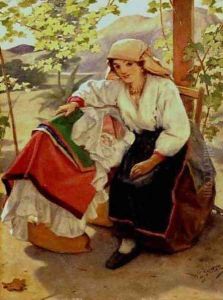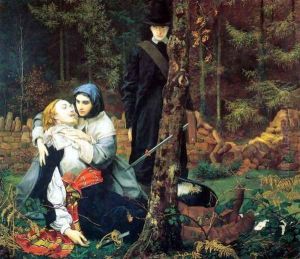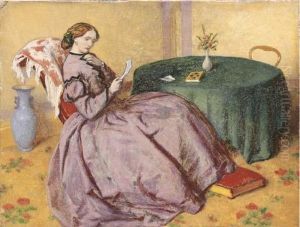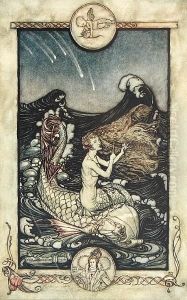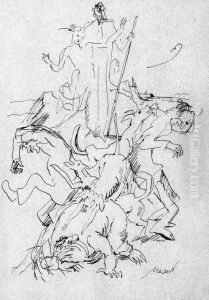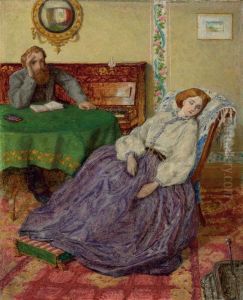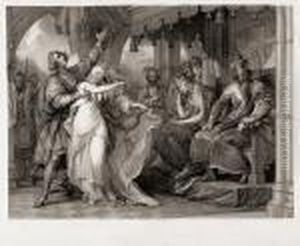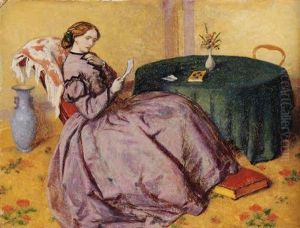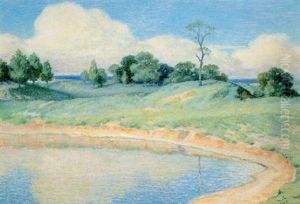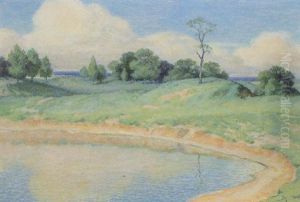William Shakespeare Burton Paintings
William Shakespeare Burton was an English painter born in 1824, primarily known for his genre and history paintings in the Victorian era. While not as famous as his namesake, the renowned playwright William Shakespeare, Burton made a significant contribution to the art of his time, reflecting the values and interests of the mid-19th century.
Burton began his artistic education at the age of 15 when he was admitted to the Royal Academy schools. He exhibited his first work at the Royal Academy in 1842, and over the following decades, he built a career as a respected artist. His painting 'The Wounded Cavalier,' exhibited in 1856, is among his best-known works and is characteristic of the Victorian fascination with historical and literary themes. This painting, like many of his works, demonstrates Burton's meticulous attention to historical detail and his ability to convey narrative and emotional depth.
Throughout his career, Burton was also involved in other aspects of the art world. For a period, he was the editor of 'The Art Union Monthly Journal' (later known as 'The Art Journal'), a significant publication of the time that covered a range of topics related to the arts. His involvement in the journal reflects his engagement with the broader cultural discourse of the era.
Burton's works were widely exhibited during his lifetime, including at prestigious institutions like the Royal Academy. Despite this, his legacy has been somewhat overshadowed by that of his contemporaries, and he is not as well-remembered as some other Victorian artists. Nevertheless, his paintings continue to be appreciated for their historical value and their representation of Victorian tastes and interests.
William Shakespeare Burton's later years saw him withdrawing from the art scene, and he died in 1916. His paintings remain, however, as a testament to the richness of Victorian art and its complex interplay with the literature, history, and social mores of the time.
